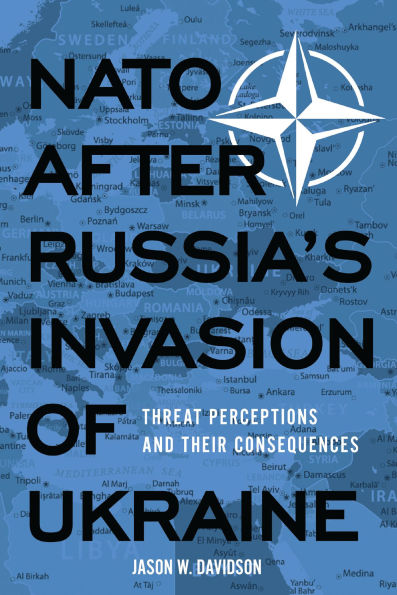When Russia began its full-scale invasion of Ukraine in February 2022, analysts and policymakers highlighted the unifying shock that NATO members experienced. However even before the return of US president Donald Trump, beneath this seeming cohesion lay deep-seated differences in how member states perceive and prioritize security threats.
NATO after Russia's Invasion of Ukraine analyzes the six most influential members of the alliance: the United States, the United Kingdom, France, Germany, Poland, and Italy. Through extensive interviews with current and former policymakers and a detailed examination of public statements and policies, Jason W. Davidson delivers a unique assessment of how divergent threat perceptions influence the NATO allies' major defense decisions, such as defense spending, and whether the alliance addresses each ally's most important threat and its view of NATO's most important challenges. With the rise in tumultuous geopolitical challenges posed by Russia, China, terrorism, mass refugee flows, and nationalism, this book provides the crucial context needed to navigate NATO's evolving role in international security.
Davidson provides vital insights for anyone seeking to understand the complex dynamics shaping the future of NATO and transatlantic security. Policy professionals will find actionable intelligence, while scholars and students of international relations and political science will appreciate its rigorous analysis and extensive primary research.
When Russia began its full-scale invasion of Ukraine in February 2022, analysts and policymakers highlighted the unifying shock that NATO members experienced. However even before the return of US president Donald Trump, beneath this seeming cohesion lay deep-seated differences in how member states perceive and prioritize security threats.
NATO after Russia's Invasion of Ukraine analyzes the six most influential members of the alliance: the United States, the United Kingdom, France, Germany, Poland, and Italy. Through extensive interviews with current and former policymakers and a detailed examination of public statements and policies, Jason W. Davidson delivers a unique assessment of how divergent threat perceptions influence the NATO allies' major defense decisions, such as defense spending, and whether the alliance addresses each ally's most important threat and its view of NATO's most important challenges. With the rise in tumultuous geopolitical challenges posed by Russia, China, terrorism, mass refugee flows, and nationalism, this book provides the crucial context needed to navigate NATO's evolving role in international security.
Davidson provides vital insights for anyone seeking to understand the complex dynamics shaping the future of NATO and transatlantic security. Policy professionals will find actionable intelligence, while scholars and students of international relations and political science will appreciate its rigorous analysis and extensive primary research.

NATO After Russia's Invasion of Ukraine: Threat Perceptions and Their Consequences
280
NATO After Russia's Invasion of Ukraine: Threat Perceptions and Their Consequences
280
Product Details
| ISBN-13: | 9781647126704 |
|---|---|
| Publisher: | Georgetown University Press |
| Publication date: | 01/05/2026 |
| Pages: | 280 |
| Product dimensions: | 6.00(w) x 9.00(h) x 0.00(d) |
